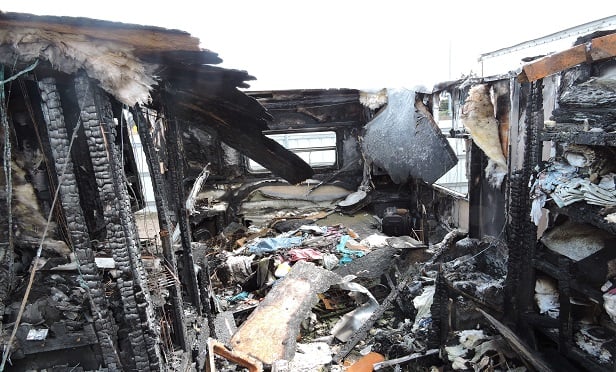
The retrofitting, rebuilding, remodeling, decorating and upgrading of older trailers is growing in popularity throughout the country. Their uniqueness and attractiveness is spreading with a rise of clubs and organizations who display their handiwork during rallies and shows. High-quality workmanship is the norm, and much of the finish craftsmanship is excellent.
These original units have for the most part, been restored with parts and accessories from original trailers, in some cases after years of searching for hard-to-get items. However, some of the acquisitions and re-installations can include now-prohibited items such as propane interior gas lighting, unvented propane space heaters, stove cook tops or range ovens used for comfort or interior space heating. Since many trailers were originally produced before detector requirements, they may not comply with today's recommendations.
Defined as luxury camping or glamorous retro camping, “glamping” campers are found throughout the U.S., Australia, Europe, and other parts of the world. Aside from vintage trailers, this trend includes yurts, some tiny houses, tents and others. Occasionally, some of the retro units are paired with vintage towing cars that are often displayed together. An advertisement for one event only allowed vehicles 25 years or older.
Related: How to protect boaters and their vessels this boating season
|Safety standards for trailers
As early as 1940, the National Fire Protection Association had developed a fire prevention standard for trailers. In the 1960s, the Trailer Coach Association evolved into NFPA 501C and is now NFPA 1192 Recreational Vehicles. NFPA 1192 is published and revised by committee action, and proposals are voted on approximately every three years. Inspections occur when units are new, and are handled by the factory, Recreational Vehicle Industry Association (RVIA) and various state governmental organizations. Manufacturers adhere to this standard for the safety for the purchaser.
Recommended For You
Want to continue reading?
Become a Free PropertyCasualty360 Digital Reader
Your access to unlimited PropertyCasualty360 content isn’t changing.
Once you are an ALM digital member, you’ll receive:
- Breaking insurance news and analysis, on-site and via our newsletters and custom alerts
- Weekly Insurance Speak podcast featuring exclusive interviews with industry leaders
- Educational webcasts, white papers, and ebooks from industry thought leaders
- Critical converage of the employee benefits and financial advisory markets on our other ALM sites, BenefitsPRO and ThinkAdvisor
Already have an account? Sign In Now
© 2025 ALM Global, LLC, All Rights Reserved. Request academic re-use from www.copyright.com. All other uses, submit a request to [email protected]. For more information visit Asset & Logo Licensing.








